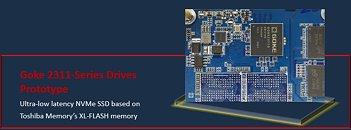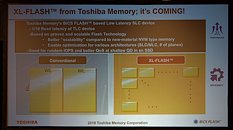Apr 13th, 2025 20:29 EDT
change timezone
Latest GPU Drivers
New Forum Posts
- GCN less stable on AM4 than 2011-3? (6)
- Lian Li O11 Dynamic XL ROG. (12)
- Regarding fan noise (12)
- Rare GPUs / Unreleased GPUs (2068)
- SK hynix A-Die (Overclocking thread) only for RYZEN AM5 users (31)
- RX 9000 series GPU Owners Club (311)
- Upgrade for a GTX-1060 video card to a X570 AM4 MB w/ a Ryzen 9 3900X (19)
- Gigabyte 5090 Aorus Master VRM Specs (21)
- What is going to be your next tech upgrade? just curious :) (40)
- AMD Radeon RX 7900 XTX overclocking (0)
Popular Reviews
- TerraMaster F8 SSD Plus Review - Compact and quiet
- ASUS GeForce RTX 5080 TUF OC Review
- Thermaltake TR100 Review
- The Last Of Us Part 2 Performance Benchmark Review - 30 GPUs Compared
- Zotac GeForce RTX 5070 Ti Amp Extreme Review
- Sapphire Radeon RX 9070 XT Pulse Review
- Sapphire Radeon RX 9070 XT Nitro+ Review - Beating NVIDIA
- Upcoming Hardware Launches 2025 (Updated Apr 2025)
- MSI MAG CORELIQUID A15 360 Review
- ASRock Z890 Taichi OCF Review
Controversial News Posts
- NVIDIA GeForce RTX 5060 Ti 16 GB SKU Likely Launching at $499, According to Supply Chain Leak (181)
- MSI Doesn't Plan Radeon RX 9000 Series GPUs, Skips AMD RDNA 4 Generation Entirely (146)
- Microsoft Introduces Copilot for Gaming (124)
- NVIDIA Sends MSRP Numbers to Partners: GeForce RTX 5060 Ti 8 GB at $379, RTX 5060 Ti 16 GB at $429 (124)
- Nintendo Confirms That Switch 2 Joy-Cons Will Not Utilize Hall Effect Stick Technology (105)
- Over 200,000 Sold Radeon RX 9070 and RX 9070 XT GPUs? AMD Says No Number was Given (100)
- Nintendo Switch 2 Launches June 5 at $449.99 with New Hardware and Games (99)
- NVIDIA PhysX and Flow Made Fully Open-Source (77)
News Posts matching #XL-FLash
Return to Keyword BrowsingGoke Microelectronics Launches Toshiba XL-Flash Based NVMe SSDs
As the industry's leading provider of SSD controllers and storage solutions, Goke Microelectronics was invited to the 2019 Flash Memory Summit to demonstrate an ultra-low latency NVMe SSD based on Toshiba Memory's XL-FLASH memory. One year ago, Toshiba Memory announced XL-FLASH at the 2018 Flash Memory Summit, promising to use ultra-low latency 3D SLC flash to reduce read latency to 5μs, which is equivalent to 1/10th of read latency of 3D TLC NAND.
Goke 2311-series drives are based on the 2311 SSD controller and are paired with Toshiba Memory's XL-FLASH memory. The prototype of 2311-series drives have implemented an overall 4K random read latency under 20μs and the final drives will offer a 4K random read latency in less than 15μs. Goke 2311-series drives support up to 4 TB capacity with a maximum write bandwidth of 1 GB/s and read bandwidth of 3 GB/s through a PCIe Gen 3 x4 interface. They will also support SM2/3/4 and SHA-256/AES-256 with built-in security engines.
Goke 2311-series drives are based on the 2311 SSD controller and are paired with Toshiba Memory's XL-FLASH memory. The prototype of 2311-series drives have implemented an overall 4K random read latency under 20μs and the final drives will offer a 4K random read latency in less than 15μs. Goke 2311-series drives support up to 4 TB capacity with a maximum write bandwidth of 1 GB/s and read bandwidth of 3 GB/s through a PCIe Gen 3 x4 interface. They will also support SM2/3/4 and SHA-256/AES-256 with built-in security engines.

Toshiba Memory Introduces XL-FLASH Storage Class Memory Solution
Toshiba Memory America, Inc. (TMA), the U.S.-based subsidiary of Toshiba Memory Corporation, today announced the launch of a new Storage Class Memory (SCM) solution: XL-FLASH. Based on the company's innovative BiCS FLASH 3D flash memory technology with 1-bit-per-cell SLC, XL-FLASH brings low latency and high performance to data center and enterprise storage. Sample shipments will start in September, with mass production expected to begin in 2020.
Classified as SCM (or persistent memory), with the ability to retain its contents like NAND flash memory, XL-FLASH bridges the performance gap that exists between DRAM and NAND. While volatile memory solutions such as DRAM provide the access speed needed by demanding applications, that performance comes at a high cost. As the cost-per-bit and scalability of DRAM levels off, this new SCM (or persistent memory) layer in the memory hierarchy addresses that issue with a high density, cost effective, non-volatile NAND flash memory solution. Poised for growth, industry analyst firm IDC estimates the SCM market is expected to reach in excess of $3B in 2022.
Classified as SCM (or persistent memory), with the ability to retain its contents like NAND flash memory, XL-FLASH bridges the performance gap that exists between DRAM and NAND. While volatile memory solutions such as DRAM provide the access speed needed by demanding applications, that performance comes at a high cost. As the cost-per-bit and scalability of DRAM levels off, this new SCM (or persistent memory) layer in the memory hierarchy addresses that issue with a high density, cost effective, non-volatile NAND flash memory solution. Poised for growth, industry analyst firm IDC estimates the SCM market is expected to reach in excess of $3B in 2022.

Toshiba Looks to Take on Optane With XL-Flash Low-Latency 3D NAND Technology
Toshiba at the Flash Memory Summit announced that it's developing 3D XL-Flash technology - an approach towards the creation of low-latency, 3D NAND that can take on the surging Optane and 3D XPoint memory technologies. Toshiba says the new approach to low-latency NAND could bring latency values down to just 1/10 of current consumer, TLC NAND pricing.
The bet here is on economies of scale - a revised NAND architecture and deployment will still be able to take advantage of the huge fabrication capacity that Toshiba already enjoys (and Samsung, with its Z-NAND, similar in purpose to what Toshiba want to do with XL-Flash), thus avoiding the need for technology and production ramp-up that brought Optane's pricing up. Toshiba will be using its BiCS flash technology, but XL-Flash will be - at least at first - deployed in SLC implementations, so as to improve performance (7 microseconds program time against QLC's 30 microsecond). Of course, this will bring storage density down, but remember the target here is offering Optane-like performance and equal or better density at lower pricing.
The bet here is on economies of scale - a revised NAND architecture and deployment will still be able to take advantage of the huge fabrication capacity that Toshiba already enjoys (and Samsung, with its Z-NAND, similar in purpose to what Toshiba want to do with XL-Flash), thus avoiding the need for technology and production ramp-up that brought Optane's pricing up. Toshiba will be using its BiCS flash technology, but XL-Flash will be - at least at first - deployed in SLC implementations, so as to improve performance (7 microseconds program time against QLC's 30 microsecond). Of course, this will bring storage density down, but remember the target here is offering Optane-like performance and equal or better density at lower pricing.
Apr 13th, 2025 20:29 EDT
change timezone
Latest GPU Drivers
New Forum Posts
- GCN less stable on AM4 than 2011-3? (6)
- Lian Li O11 Dynamic XL ROG. (12)
- Regarding fan noise (12)
- Rare GPUs / Unreleased GPUs (2068)
- SK hynix A-Die (Overclocking thread) only for RYZEN AM5 users (31)
- RX 9000 series GPU Owners Club (311)
- Upgrade for a GTX-1060 video card to a X570 AM4 MB w/ a Ryzen 9 3900X (19)
- Gigabyte 5090 Aorus Master VRM Specs (21)
- What is going to be your next tech upgrade? just curious :) (40)
- AMD Radeon RX 7900 XTX overclocking (0)
Popular Reviews
- TerraMaster F8 SSD Plus Review - Compact and quiet
- ASUS GeForce RTX 5080 TUF OC Review
- Thermaltake TR100 Review
- The Last Of Us Part 2 Performance Benchmark Review - 30 GPUs Compared
- Zotac GeForce RTX 5070 Ti Amp Extreme Review
- Sapphire Radeon RX 9070 XT Pulse Review
- Sapphire Radeon RX 9070 XT Nitro+ Review - Beating NVIDIA
- Upcoming Hardware Launches 2025 (Updated Apr 2025)
- MSI MAG CORELIQUID A15 360 Review
- ASRock Z890 Taichi OCF Review
Controversial News Posts
- NVIDIA GeForce RTX 5060 Ti 16 GB SKU Likely Launching at $499, According to Supply Chain Leak (181)
- MSI Doesn't Plan Radeon RX 9000 Series GPUs, Skips AMD RDNA 4 Generation Entirely (146)
- Microsoft Introduces Copilot for Gaming (124)
- NVIDIA Sends MSRP Numbers to Partners: GeForce RTX 5060 Ti 8 GB at $379, RTX 5060 Ti 16 GB at $429 (124)
- Nintendo Confirms That Switch 2 Joy-Cons Will Not Utilize Hall Effect Stick Technology (105)
- Over 200,000 Sold Radeon RX 9070 and RX 9070 XT GPUs? AMD Says No Number was Given (100)
- Nintendo Switch 2 Launches June 5 at $449.99 with New Hardware and Games (99)
- NVIDIA PhysX and Flow Made Fully Open-Source (77)



